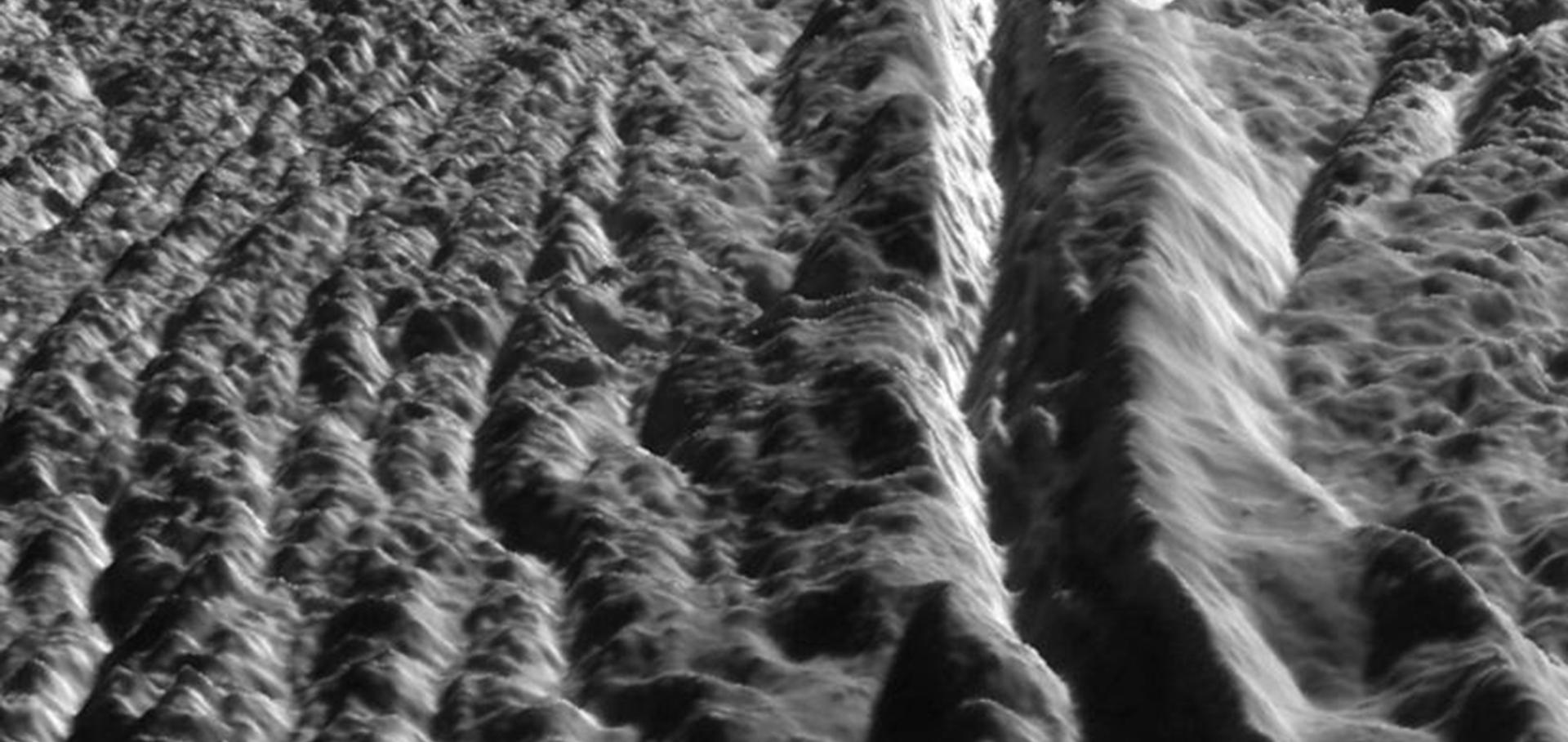Thermal properties of Rhea's poles: Evidence for a meter-deep unconsolidated subsurface layer
Icarus Elsevier 272 (2016) 140-148
Abstract:
Cassini's Composite Infrared Spectrometer (CIRS) observed both of Rhea's polar regions during a close (2000 km) flyby on 9th March 2013 during orbit 183. Rhea's southern pole was again observed during a more distant (51,000 km) flyby on 10th February 2015 during orbit 212. The results show Rhea's southern winter pole is one of the coldest places directly observed in our Solar System: surface temperatures of 25.4 ± 7.4 K and 24.7 ± 6.8 K are inferred from orbit 183 and 212 data, respectively. The surface temperature of the northern summer pole inferred from orbit 183 data is warmer: 66.6 ± 0.6 K. Assuming the surface thermophysical properties of the two polar regions are comparable then these temperatures can be considered a summer and winter seasonal temperature constraint for the polar region. Orbit 183 will provide solar longitude (LS) coverage at 133° and 313° for the summer and winter poles respectively, while orbit 212 provides an additional winter temperature constraint at LS 337°. Seasonal models with bolometric albedo values between 0.70 and 0.74 and thermal inertia values between 1 and 46 J m−2 K−1 s−1/2 (otherwise known as MKS units) can provide adequate fits to these temperature constraints (assuming the winter temperature is an upper limit). Both these albedo and thermal inertia values agree within the uncertainties with those previously observed on both Rhea's leading and trailing hemispheres. Investigating the seasonal temperature change of Rhea's surface is particularly important, as the seasonal wave is sensitive to deeper surface temperatures (∼tens of centimeters to meter depths) than the more commonly reported diurnal wave (typically less than a centimeter), the exact depth difference dependent upon the assumed surface properties. For example, if a surface porosity of 0.5 and thermal inertia of 25 MKS is assumed then the depth of the seasonal thermal wave is 76 cm, which is much deeper than the ∼0.5 cm probed by diurnal studies of Rhea (Howett et al., 2010). The low thermal inertia derived here implies that Rhea's polar surfaces are highly porous even at great depths. Analysis of a CIRS focal plane 1 (10–600 cm−1) stare observation, taken during the orbit 183 encounter between 16:22:33 and 16:23:26 UT centered on 71.7°W, 58.7°S provides the first analysis of a thermal emissivity spectrum on Rhea. The results show a flat emissivity spectrum with negligible emissivity features. A few possible explanations exist for this flat emissivity spectrum, but the most likely for Rhea is that the surface is both highly porous and composed of small particles (<∼50 µm).Thermal properties of Rhea's Poles: Evidence for a Meter-Deep Unconsolidated Subsurface Layer
(2016)
SPECTRAL ANALYSIS OF PLUTO'S WATER-ICE RICH SPOTS AT NEAR INFRARED WAVELENGTHS
Abstracts with programs (Geological Society of America) Geological Society of America (2016)
The Pluto system: Initial results from its exploration by New Horizons
(2015)
The Pluto system: Initial results from its exploration by New Horizons
Science American Association for the Advancement of Science (AAAS) 350:6258 (2015) aad1815

